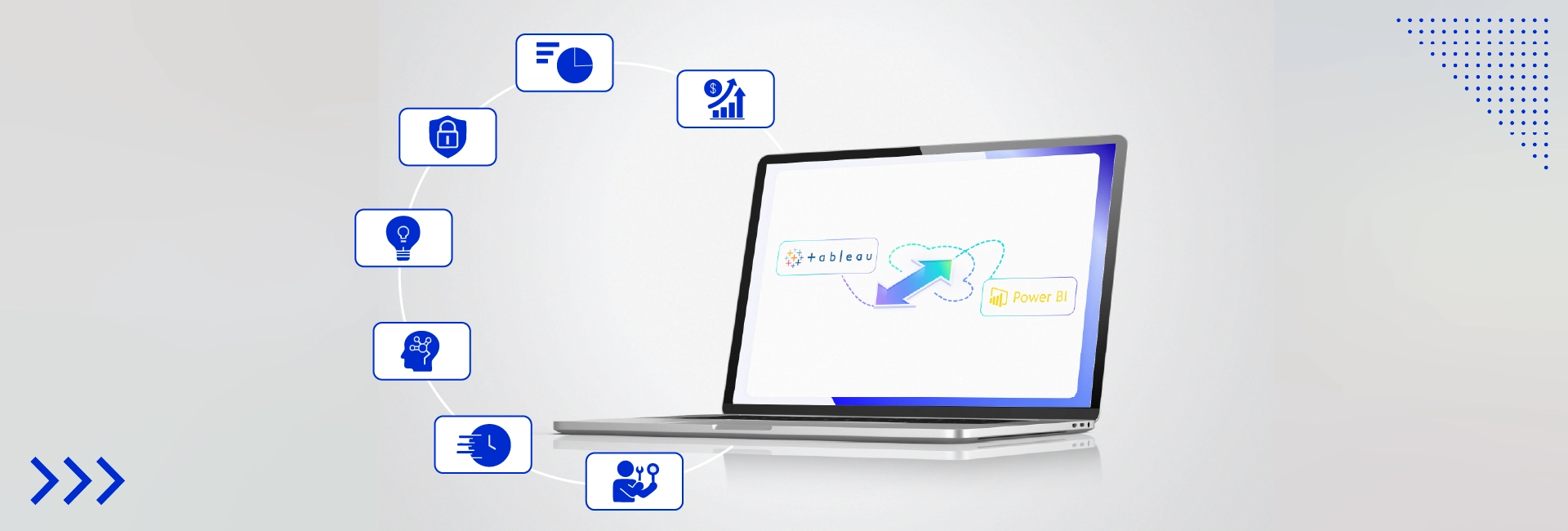Have you ever heard that 28% of small and medium-sized businesses report financial errors in their bank accounts at least once a month?
- Bank reconciliation basics: Know where your money stands
- Why bank reconciliation matters for your business
- What bank reconciliation statement reveals about your business?
- Step-by-step process of bank reconciliation statement
- How technology can help in smooth bank statement reconciliation?
- Common challenges in bank reconciliation statements and how to solve them
- How FBSPL can make a difference in your books of accounts?
Inconsistencies between internal data and bank statements can be a frequent and expensive problem, even for large businesses. Reconciling bank accounts is more of a monthly chore for businesses of all sizes; it’s a powerful tool for financial clarity and control.
Mismatched accounts can result in missed payments, returned checks, and even inaccurate cash flow, directly affecting a business's performance. This is where a bank reconciliation statement steps in as a reliable fix. Reconciliation helps detect errors, identify unauthorized transactions, and manage cash flow by up to 30% by comparing bank statements with internal information. It’s a straightforward process that clarifies your business's financial health.
You may wonder what other information a bank reconciliation statement might provide about your company. If so, let's examine how this standard procedure can provide insight into your business's operational effectiveness and financial stability.
Bank reconciliation basics: Know where your money stands
Bank statement reconciliation compares your business’s internal financial records with your bank statements for a perfect match. This might sound simple, but it’s essential for accurate financial management. Every deposit, withdrawal, and transfer recorded in your books should align with the transactions shown on your bank statement.
You may ask why this alignment is so important. It confirms that your cash balance is accurate, which helps you avoid cash flow surprises. Additionally, it assists in spotting irregularities before they become more serious problems, such as missing transactions, duplicate entries, or unlawful withdrawals.
These small discrepancies can add up quickly for businesses dealing with high transaction volumes or multiple accounts, causing cash flow imbalances or undetected fraud. A Bank reconciliation statement acts as a financial “reality check” to reflect your financial situation.
Why bank reconciliation matters for your business

Although bank statement reconciliation can be just another accounting task, it has a much more profound effect on your company. You may experience everything, from identifying fraud to creating sound business terminology. Here’s how regular reconciliation benefits your business:
1. Ensures accuracy in financial records
The foundation of sound financial management is accurate documentation. When your internal records don’t match your bank statements, it’s a red flag that something’s amiss. A duplicate entry, a missed transaction, or an inaccurate amount could cause a discrepancy between your internal records and bank statements.
For example: If a payment is mistakenly recorded twice, your cash balance will be incorrect, affecting your capacity to invest or make timely payments. Regular bank reconciliation statements help you catch and correct these mistakes promptly so your records always reflect your actual financial position.
2. Prevents and detects fraud
Preventing fraud is a top priority for every business despite its size. What happens if you notice an unauthorized withdrawal that happens out of the blue? This could be an early warning of fraud. Bank statement reconciliation allows you to monitor your accounts and identify any unusual activity.
According to the ACFE, businesses lose 5% of revenue annually due to fraud. Such losses can be minimized with internal solid controls like regular account reconciliations.
3. Improves cash flow management
Understanding your financial status is the first step toward effective cash flow management. Bank reconciliation statement gives you a clear, up-to-date snapshot of your finances by verifying each transaction, from deposits to withdrawals. Because of its accuracy, you may steer problems like overdrafts, late payments, and cash flow gaps.
Let’s say you are awaiting a client payment that hasn't been processed yet to cover your pending expenses. Reconciliation brings this to light in your records so you may make any necessary adjustments to your spending goals.
4. Supports informed financial decisions
Sound decision-making requires accurate records, particularly when budgeting, expansion planning, or new investment considerations are involved. Frequent account reconciliation guarantees that your cash balance is accurate, giving you a strong basis for making financial decisions. If disparities exist, you will identify them before allocating resources to make decisions with assurance.
5. Helps identify hidden costs and overlooked charges
Hidden fees, duplicate charges, or overlooked expenses can quietly drain your resources. By reconciling bank statements, you can spot these costs and address them.
For example, you may notice recurring service charges that can be negotiated down or avoidable bank fees you weren’t aware of. By recognizing these fees, you can control your overall cost and keep wasteful spending out of your budget.
6. Enhances internal controls and accountability
Reconciliation also establishes internal controls, creating accountability within your finance team. Regular reconciliation lets you track which team member handled specific transactions and identify any inconsistencies. This transparency is beneficial in large organizations where multiple people handle financial entries. It minimizes errors and ensures that everyone follows established accounting protocols.
7. Simplifies audits and compliance
Reconciliation speeds up and clarifies the audit process for companies subject to frequent audits. When records are regularly reconciled, auditors can quickly establish compliance with financial requirements and validate transactions. This practice demonstrates a dedication to precise financial management and internal control and also fortifies your defense while auditing.
8. Builds trust with investors and stakeholders
Reliable financial records aren’t just for internal use; they also build trust with investors, lenders, and other stakeholders. When your reconciliations are current, you can safely deliver accurate financial data to your partners, investors, or board. This transparency instills confidence in your financial responsibility to secure funding or investment in the future.
What bank reconciliation statement reveals about your business?

Have you ever experienced the frustration of a sudden cash shortfall or an unexplained mismatch in your accounts? It’s a common pain point in your business accounting, which reveals a critical financial position. These discrepancies may seem minor at first but can quickly disrupt your cash flow and lead to larger issues if left unchecked. You may ask how a bank reconciliation statement helps with this. Well, it goes beyond the balance sheet.
Let’s have a look at the detailed insights this process provides:
- Financial stability and health: By giving you a comprehensive picture of your cash flow, reconciliation lets you determine whether your company is continuously in a positive financial position. If reconciliations show recurring cash shortfalls or a trend of overdrafts, they may point to more serious problems with financial management or spending patterns that require quick action.
- Operational efficiency: Inefficiencies in your accounting procedures may be indicated by frequent disparities or hold-ups in transaction reconciliation. For instance, it may indicate that your team needs more training or that your current system isn't handling transaction volumes if you frequently discover missing or delayed data. Finding these gaps enables you to optimize processes for more seamless financial management.
- Expense and revenue patterns: Reconciliation assists you in identifying trends in expenses and revenue by revealing spending patterns and seasonal variations. For example, you can prepare beforehand and set aside money to cover periods when you observe higher expenses. Similarly, understanding revenue patterns can help you predict cash flow and adjust budgets accordingly.
- Revealing hidden costs: Small recurring charges like bank fees, service charges, or duplicate payments can subtly drain resources over time. Reconciliation helps you identify these costs and forces you to renegotiate terms or cut unnecessary expenses. By catching these charges early, you can reduce waste and improve overall cost control.
- Accountability and internal controls: Regular reconciliation establishes accountability within your finance team, which requires tracking and verifying each transaction. This process can help identify any inconsistencies or errors by specific team members, ensuring everyone follows established accounting procedures. Strong internal controls help maintain transparency and reduce errors, building trust within your organization.
Step-by-step process of bank reconciliation statement

Performing a bank reconciliation may seem complex, but breaking it down into clear steps can simplify the process. Here’s a quick guide:
1. Gather bank statements and internal records
Start by collecting your bank statement and your internal records, like your cash ledger, for the period you’re reconciling. Ensure you have all receipts, invoices, and any transaction documentation handy.
2. Compare each transaction
Go line-by-line, matching transactions from your bank statement with entries in your records. Mark off each transaction as you match it. Look for different amounts or missing entries.
3. Identify discrepancies
As you compare, take note of any discrepancies, like unmatched or duplicate transactions. Timing issues may also come up, such as deposits in transit or outstanding checks, which you’ll need to track separately.
4. Adjust your records
Make necessary adjustments in your records to reflect accurate balances. Add missing transactions, correct any amounts that don’t match, and document all changes made for transparency.
5. Confirm ending balances match
Once adjustments are complete, check that the final balance in your records matches the ending balance on your bank statement. If they don’t match, recheck for missed entries or miscalculations.
6. Save your reconciliation
Document the reconciliation process by saving copies of your adjusted records, notes on discrepancies, and any changes you made. This serves as a reference for future reconciliations and is crucial for audits.
How technology can help in smooth bank statement reconciliation?
Reconciliation of bank statements may feel like a never-ending task, especially when dealing with piles of transactions. Even a small mismatch can take hours to trace, which consumes valuable time you’d rather spend on strategic work.
And what’s interesting? Account reconciliation automation is a deal to simplify this process. Automated accounting software can handle a large portion of the labor-intensive tasks. It automatically imports transactions, categorizes entries, and matches them with your bank statements. Doesn’t it exist yet, and is it favorable to your business's health? Moreover, Advanced tools flag inconsistencies immediately, so you don’t have to hunt down errors line by line. With direct bank integrations, these tools pull in real-time data, making it easier to keep records accurate with minimal effort.
Common challenges in bank reconciliation statements and how to solve them
Despite best practices, bank reconciliation has its own set of difficulties. A few typical obstacles and different ways to get beyond them are as follows:
- Timing differences
Discrepancies are frequently caused by transactions not appearing on your bank statement immediately. These could be outstanding checks or deposits in transit. Until they are resolved, add these outstanding transactions to your reconciliation and maintain a separate record. - Data entry errors
Manual data entry can create simple yet frustrating errors that disrupt the reconciliation process. However, automated accounting software can minimize these errors by automatically pulling transaction data and reducing manual input. - Multiple bank accounts
Managing multiple accounts, each with its own transactions, can complicate reconciliation. That shouldn’t be the case! You can consolidate your accounts whenever possible or outsource account reconciliation services to streamline the process. - Complex transactions
Certain transactions, like refunds, chargebacks, or transfers, may not match easily between records. For these cases, maintain clear documentation for each transaction type and correctly categorize them in your records to simplify reconciliation. - Unreconciled differences
Sometimes, even after adjustments, small differences may persist. Setting up a "Suspense account" to temporarily hold these differences until they’re resolved can keep your main accounts accurate while you investigate further.
How FBSPL can make a difference in your books of accounts?
Bank reconciliation doesn’t have to be a burden, especially if you manage a high volume of transactions or juggle multiple accounts. FBSPL specializes in handling these administrative challenges with precision and efficiency.
With our years of expertise, we truly understands the nuances of reconciliation, from handling timing differences to ensuring transaction accuracy across accounts. Our team uses advanced tools such as Quickbooks, Zoho, and more to catch errors, flag inconsistencies, and ensure every transaction aligns perfectly with your bank records.
Contact us now! We’re here to answer your questions and help you get started.





